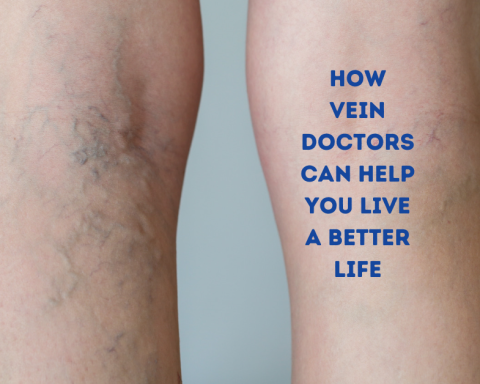Varicose veins occur more frequently in women’s legs. Although, in most cases, they are only considered an aesthetic problem, sometimes they can be life-threatening. This problem has not only physical but also psychological effects. Why do varicose veins appear, and how can a vein doctor help you? In this post, you will find information about varicose veins and existing treatments.
What is the function of veins?
Veins are part of the circulatory system; through them, oxygen-poor blood circulates and returns to the heart. The veins in the legs have valves that promote a unidirectional flow of blood back to the heart. The movement of the blood depends on muscle contractions and valves that prevent the blood from flowing backward.
Why do varicose veins arise?
When the valves of the veins have deformities or do not work correctly, blood accumulates in the legs. Sometimes, damage to the valves causes the blood to back up and prevents a continuous flow. This malfunction causes the vein walls to weaken and widen, forming varicose veins.
Although varicose veins can appear in any part of the body, their presence is more common in the legs. Veins in the legs require a greater effort to return blood to the heart. It is because the veins in the legs must circulate the blood against gravity and are the farthest from the heart. Thus, any malfunctioning valves or weakening of the vein walls can cause blood to pool and increase blood pressure, forming varicose veins.
What factors increase the likelihood of varicose veins?
Varicose veins can form from anything that causes blood pressure in the veins to increase, such as:
– Obesity
– Pregnancy
– Physical inactivity
– Prolonged sitting or standing
– History of circulatory problems
How does a vein doctor treat varicose veins?
You should see a vein doctor when you have varicose veins. Depending on the severity of your condition, a vein doctor may treat your problem with the following:
1) Compression stockings. This type of stocking is recommended as therapy for patients whose condition is in an initial phase or for those in a recovery phase. This therapy uses socks that compress the legs, promoting proper blood circulation. By using these socks, you will be able to alleviate symptoms such as pain, swelling, and heaviness in the legs. Also, some people may experience itching or skin irritation when wearing compression stockings. It is essential to know that this therapy only relieves the symptoms, not the cause.
2) Medication. Your vein doctor may prescribe medications to relieve pain and some varicose vein-related symptoms such as swelling and skin changes. It may take weeks to show improvement, and some people may have gastrointestinal problems or skin rashes.
3) Minimally invasive treatments. Several treatments will allow you to restore the health and appearance of your legs. These treatments can be performed in the doctor’s office and, in most cases, do not need hospitalization. A local anesthetic will be applied to avoid discomfort and pain. Among these treatments are:
– Sclerotherapy. It is mainly used to treat spider veins. It consists of injecting a saline or chemical solution that hardens and disappears the vein.
– Phlebotomy. Generally, it is used to treat superficial varicose veins—making a small incision near the damaged vein to remove it.
– Ablation. Through radiofrequency or laser energy, it uses intense heat to seal and destroy the varicose vein. This vein decreases in size and eventually disappears.
4) Surgery. When people cannot undergo the above treatments, or their condition is severe, they will require surgery. This procedure requires the patient to be fully anesthetized so the veins can be ligated or extirpated. Surgery is more painful and requires a longer recovery time. However, this option is rarely chosen.
Conclusion
Remember that only a vein doctor can evaluate your condition and prescribe the best therapy. The benefit is that there are now least invasive and unpleasant therapies available to help restore your veins’ health and legs’ appearance. Future problems can be avoided with proper and early treatment.








